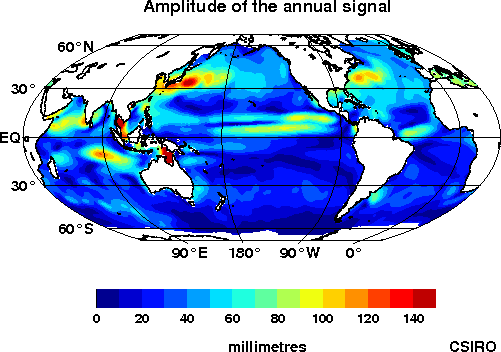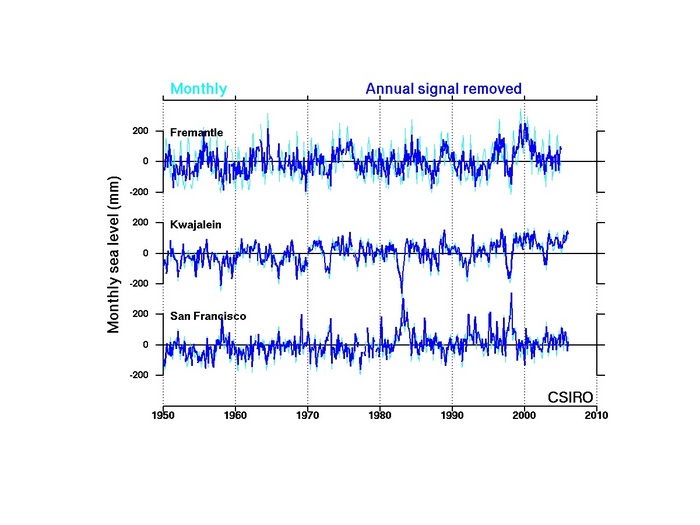
Figures marked "CSIRO", are copyright CSIRO, but please feel free to use them, conditional on the figures not being altered, and their source being acknowledged, and with a link to this site where possible. All other figures are copyright. Please do not copy without the owner's permission.
|
Why does sea level change?Seasonal changesAn important cause of intra-annual sea level change is the annual warming/cooling cycle in both hemispheres - in each hemisphere the oceans warm and expand in summer and cool and contract in the winter. Thus the sea levels in each hemisphere are higher in summer and early autumn, and lower in winter and early spring. In addition there is an increase of water stored on land in the Northern Hemisphere winter and thus less in the ocean, leading to a lower global average sea level at this time of year. Other changes are related to the latitudinal movement of the weather patterns in the ocean-atmosphere system, which produce changes in ocean currents and thus changes in sea level.
Global- and hemispheric-mean sea level from TOPEX/Poseidon and Jason-1. The two hemispheric signals partially cancel to produce a global signal with smaller amplitude. 
|
|
Website owner: Benoit Legresy | Last modified 9/03/10
|
![]()

